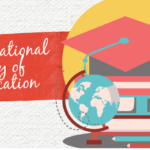5 Ways to End Poverty by Focusing on Women and Girls
We know that women and girls are a powerful force for change. And when we put women and girls at the center of development, we can break the cycle of poverty. We can help them delay their marriages, choose the timing and spacing of their pregnancies, access needed services and information, complete their education, and gain the knowledge and skills they need to participate in the economy and in their country’s development.
Yet, all too often gender inequality gets pushed aside because of competing priorities or a lack of resources. People say that gender equality isn’t their area or that gender equality is a “women’s issue.”
The truth is, it’s everyone’s issue. We cannot end extreme poverty without focusing on women and girls, and the barriers that prevent them from reaching their full potential.
When we put women and girls at the center of development, we can see a positive ripple effect across their families, communities and nations. We have the opportunity to make the world more stable, secure and resilient.
How can we do this?
- We can #LetGirlsLearn: A staggering #62MillionGirls are out of school. USAID is working with communities to identify solutions to the multiple barriers too many girls encounter when trying to get the education they deserve. An education allows a girl to go to college, participate politically and get a good job. But beyond that, countries that invest in girls’ education have lower maternal and infant deaths, lower rates of HIV and AIDS and better child nutrition. When we #LetGirlsLearn, we save lives too.
- Empower women to engage in their communities: In Senegal, USAID trained women as community facilitators to educate their communities on all aspects of nutrition, from best farming techniques to teaching about health and good sanitary habits — all activities that prevent malnutrition.
-
Recognize the unique challenges of women and girls: Power Africa brings electricity to Maasai communities to power homes and water purification systems, allowing women and girls to use time previously spent collecting water on other activities like school and work.
-
Work with men and boys: No sustainable solution to fight gender inequality can ignore men and boys. In working with fathers, husbands, brothers and other men in women’s lives, we can change harmful gender norms that lead to poor health outcomes and contribute to gender-based violence and other practices that marginalize women and girls. We can also encourage men and boys to be part of efforts that teach them how to build positive relationships and parenting skills.
-
Fill the knowledge gaps: A lack of comprehensive, current information about women and girls, especially in developing countries, hinders efforts to advance gender equality. USAID is excited to work with the Gates Foundation and other partners to fill critical gender data gaps and better understand specific challenges women and girls face.
Want to help women and girls around the world? Learn more about USAID’s work to address gender inequality — from addressing the specific needs of adolescent girls to our efforts to ensure that women have a voice at the table.
At USAID, we recognize that to #EndPoverty, we need to put women and girls at the center of development. It’s just #SmartDev.
Check out more on our work on gender equality and women’s empowerment
See our our infographic on why Gender Equality = Smarter Development
Follow #StateofWomen for updates from the United State of Women Summit
Photo: Ixil Mayan girls pose for a photo in Guatemala. | USAID




